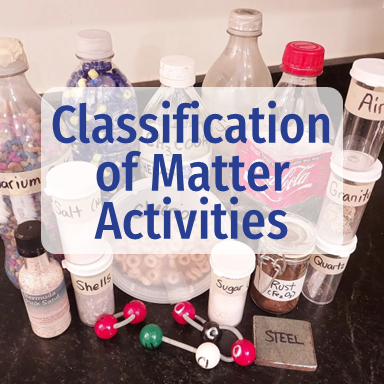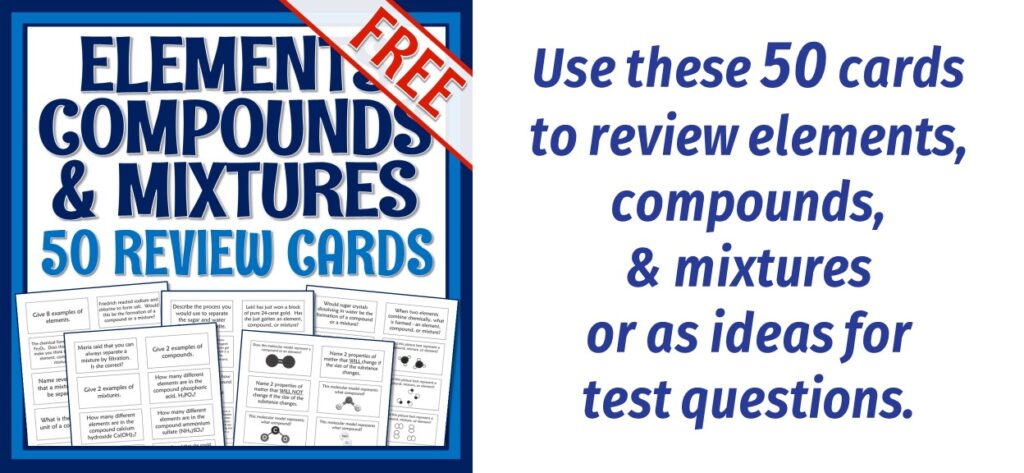
Classification of Matter Activities
True confessions of a science teacher: I pick favorites. Favorite units to teach, that is… and classification of matter activities don’t make the list!
DNA and chromosomes? LOVE IT! Human impact on the environment? ALL ME! Chemical and physical changes? A BLAST!
Pure substances versus mixtures? Meh.
But… my students wouldn’t say this. (I hope!)
Whenever I find a topic a bit yawn-worthy, my gut reaction is to turn that around and make it fun. The following are some of the ways I spice up my Classification of Matter Unit with fun activities and real-world connections.
A Gift to Get You Started
If you are relatively new to teaching the classification of matter, I have a little gift for you! It might help to get you started where I always start – a PowerPoint presentation with notes. CLICK HERE to get instant FREE access to my PPT presentation plus the Cloze notes that go with it!

But notes are where the typical activities end for me. Keep reading to see how I spice up my classification of matter unit!
Make Them Move
It’s an oldy-but-goody teacher trick. We all know that getting kids moving keeps them more engaged.
For this unit, one of the ways that I have kids getting up and around is to place examples of elements, compounds, and mixtures (like… actual touchable examples) all around the room. Pairs move from station to station and work together to categorize each example. There’s a ton of free, cheap, and easy-to-get examples that can be used:
- Elements: copper pipe or wire, aluminum foil, helium balloon, pencil graphite (carbon), iron nail, cast iron pan, silver spoon, iodine tincture (contains alcohol, but you can dry it out), lead solder, and I also use examples from this hands-on elements kit (not cheap but I inherited it in my supply room)
- Compounds: quartz, vinegar, salt, make molecule models from an atom kit, rust, sugar, water, blackboard chalk (technically gypsum, who knew?), rubbing alcohol, propane
- Mixtures: soda (Coke, Sprite, etc), bracelet-type bead mixtures, sand, container of air, granite, steel, cereal, aquarium rocks, saltwater
The setup is simple. I label each of the samples and randomly place them around the room. If the sample is a compound, I include its molecular formula as a clue. I instruct students to make a T-chart in their notebook. On one side of the “T” is the sample name and on the other they record if it is an element, compound, or mixture.
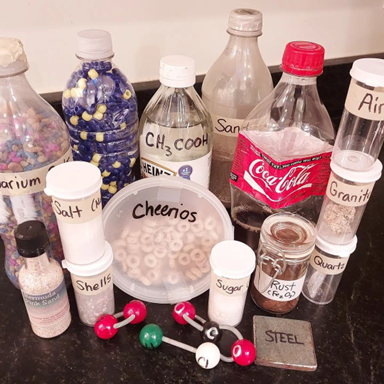
Nuts and Bolts of Classifying Matter
For a more abstract way to review the differences between elements, compounds, and mixtures, have the students analyze and make models. For this simple (but very effective!) activity, you’ll just need some handfuls of cheap metal nuts, bolts, and washers. In this model, each metal piece represents an atom of different elements. So, a bolt by itself represents one element. A washer by itself is another element. And the nut it yet another element. A bolt that has a nut screwed onto it represents a compound. An unattached mix of nuts and bolts represents a mixture.
To set this classification of matter activity up, create many different combinations (attached and not attached in different configurations) of the metal pieces. (I put each combo in a cheap petri dish and tape it shut so that kids can’t alter my arrangements.) Students must identify if each example represents an element, compound, or mixture. If you want to take it further, you can have students make and explain their own models, too.
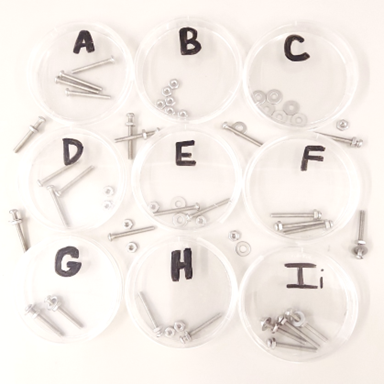
If you would like to check out my done-for-you student sheet for this activity, click HERE!
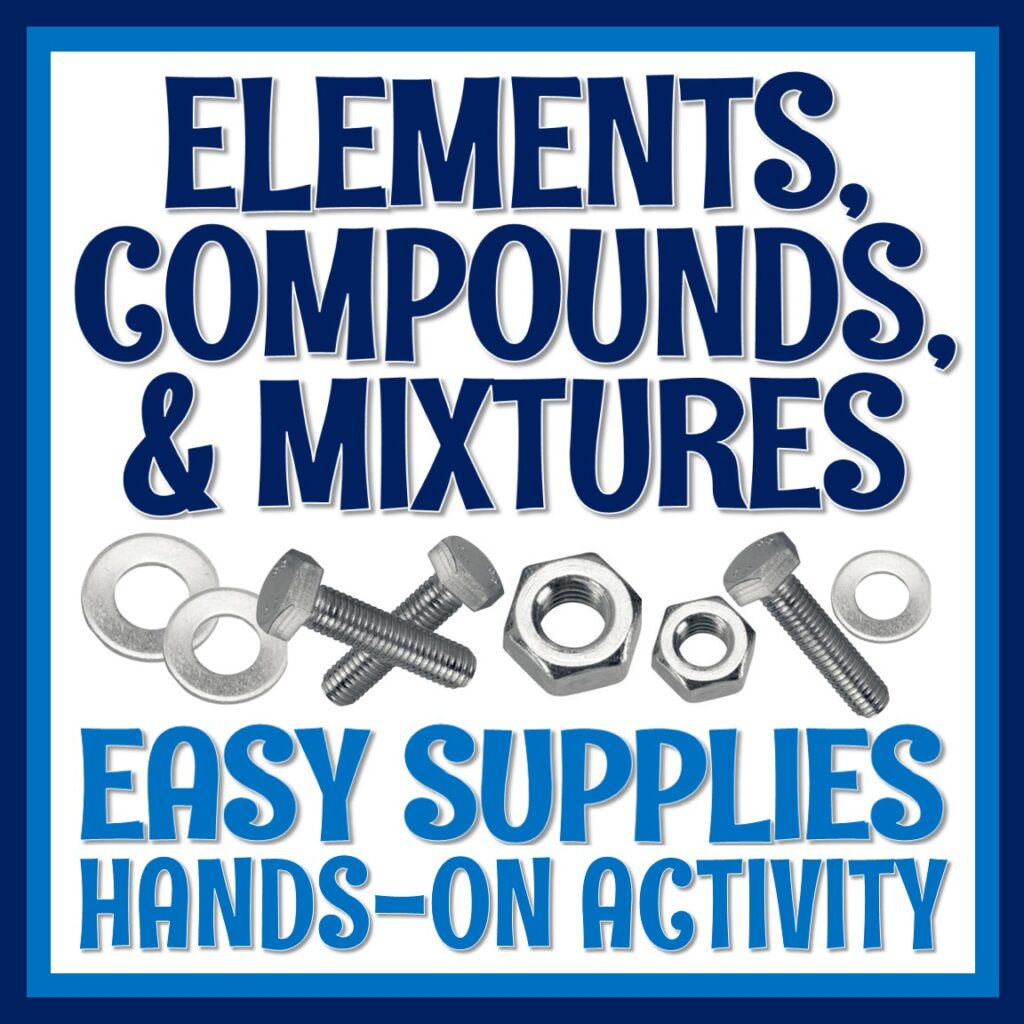
Cereal Lab
Hands-on classification of matter activities are always kid favorites, but when you add a bit of student choice, the engagement gets even better. Year after year, my students’ favorite activity in this unit is my cereal lab. Ultimately, this activity involves isolating the elemental iron from breakfast cereal – an awesome example of separating a mixture. Students can either bring in their favorite cereal from home (hello, simple engagement tactic!) or use a cereal that you provide. (I find Cheerios work well.) Other than the cereal, the only other supplies you need are sandwich bags, water, and magnets.
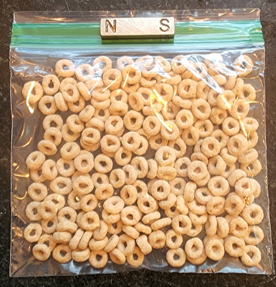
Cereal, Bags, & Magnets
While this separation of a mixture activity is a nice tie-in to this unit on its own, this activity goes a bit further. Students will learn a little bit about each part of the cereal (and milk! and spoon!) to classify each component as an element, compound, or mixture. So, not only does this engaging activity drive home the point that mixtures can be separated by physical means, but it also reviews the classification of matter into elements, compounds, and mixtures.
If you want to try this fun lab for yourself, you can find the student sheet in my shop.
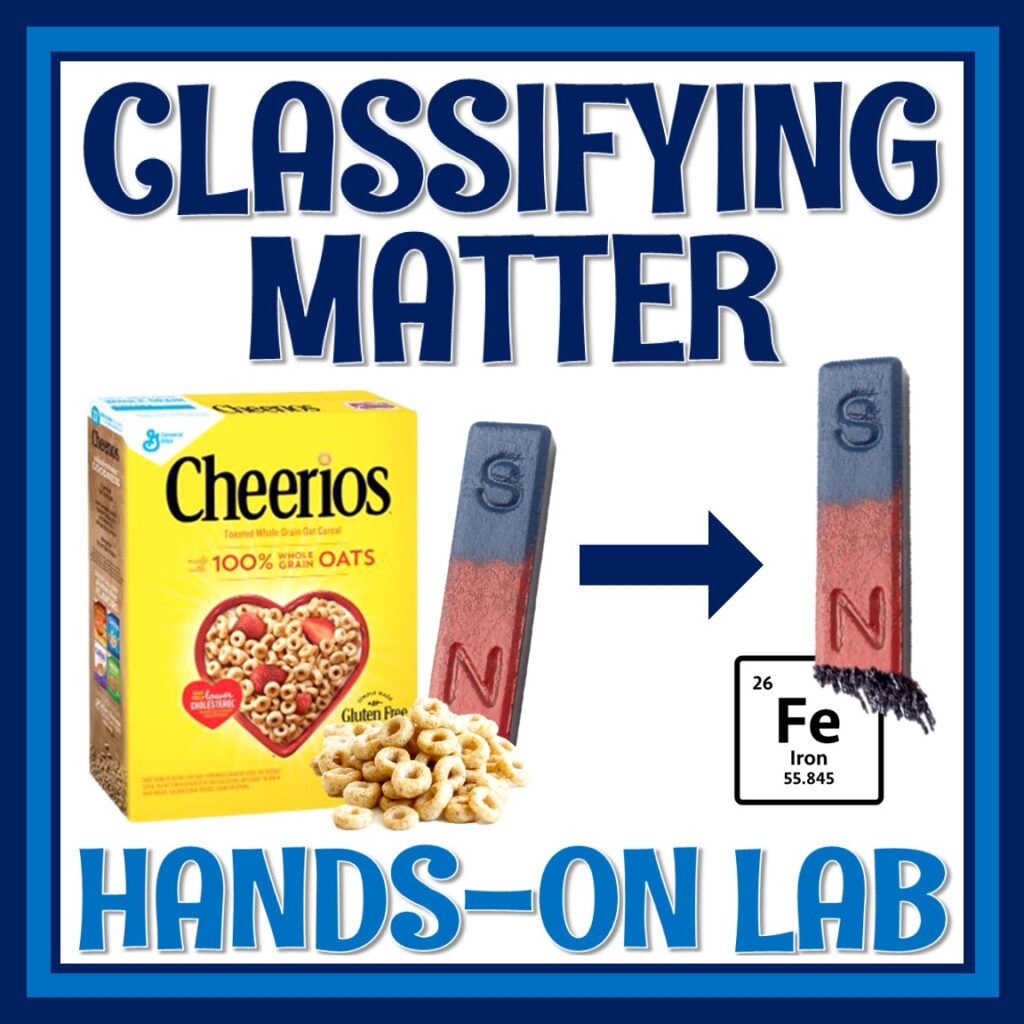
Free Flash Cards
This is a very simple but fun way to review and reinforce the differences between pure substances and mixtures. Kids stay actively engaged because it feels like a game and they are working with peers.
This one is easy… simply download my free review cards. I print them on colored paper so they don’t mix in and get lost with other white papers that might be lying around. I also reuse the cards class-to-class and year-to-year by saving sets in sandwich bags. To do the activity, just provide one set of cards for each pair or group of students. They take turns asking each other the questions on the cards. Yup, that’s it. Not everything has to be complicated to be effective!
High-Engagement Article
I have to admit that my students don’t love to read (not all of them, anyway). But I have found that student interest in reading varies widely based on what they’re reading. Textbook? Good luck. An article with truly engaging real-world connections? Now you’re getting somewhere.
It turns out that the FBI often uses mixture separation techniques to solve crimes. Students are enthralled to learn how thin-layer chromatography helps identify the dye that stains a bank-robber’s hands. And, they’ll be interested to read that a mixture separation process called HPLC helps identify components of explosives. The article doesn’t focus on the techniques themselves (it’s still appropriate for middle school level curriculum), rather it highlights a real-world way in which separating mixtures matters. You can get this interesting article through my shop.

Entire Classification of Matter Activities Unit
If you’re looking to save A TON of planning time, consider my Classification of Matter Activities and Complete Unit. It has everything you need to teach elements, compounds, and mixtures!
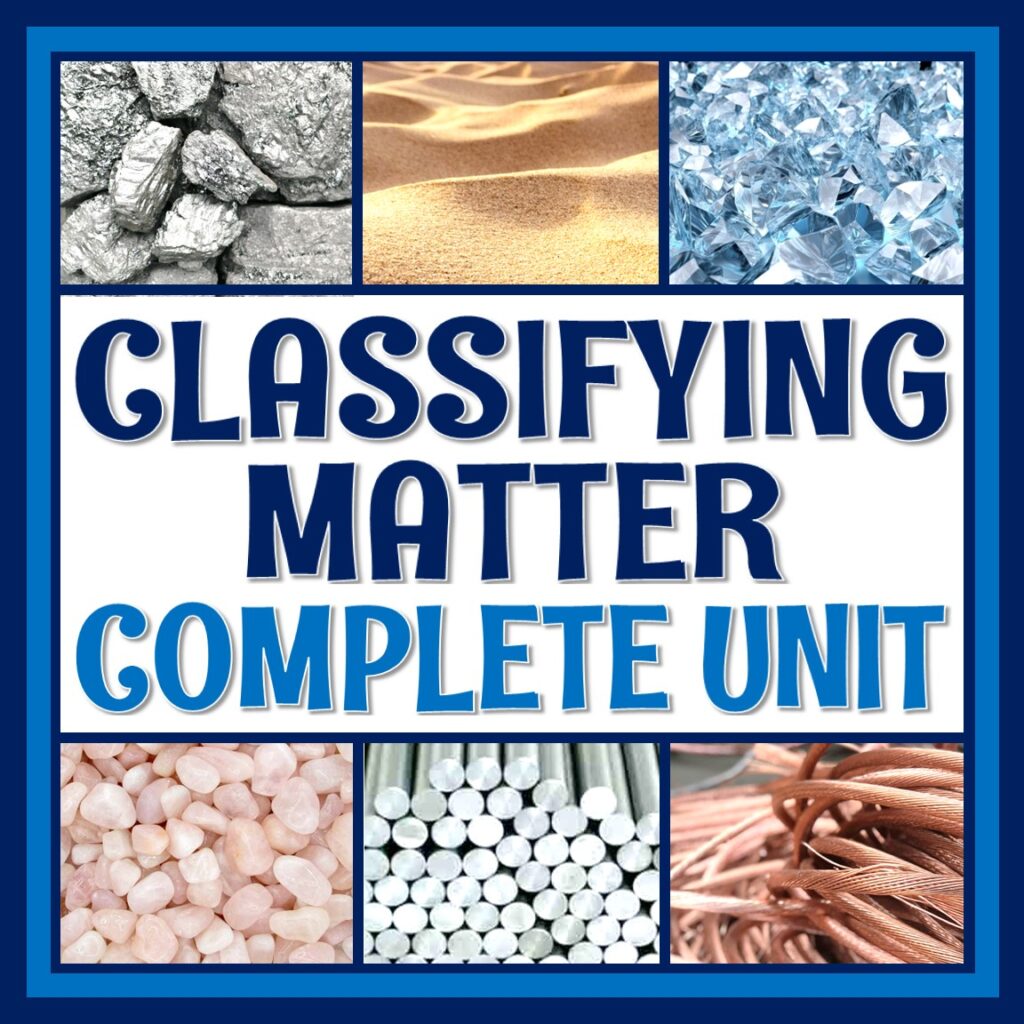
As an Amazon Associate I earn from qualifying purchases.
Share it:
- Read more about: Physical Science

